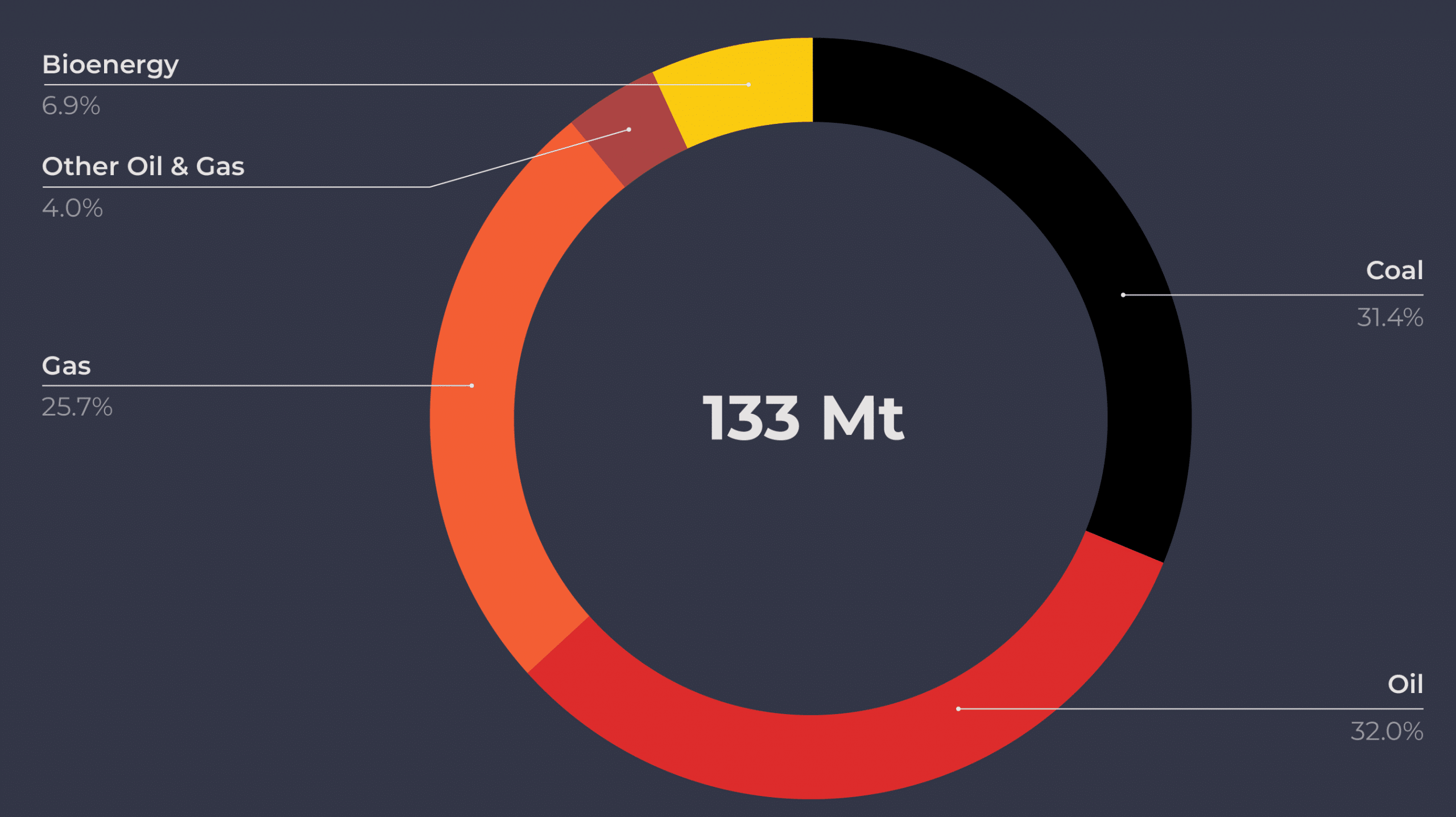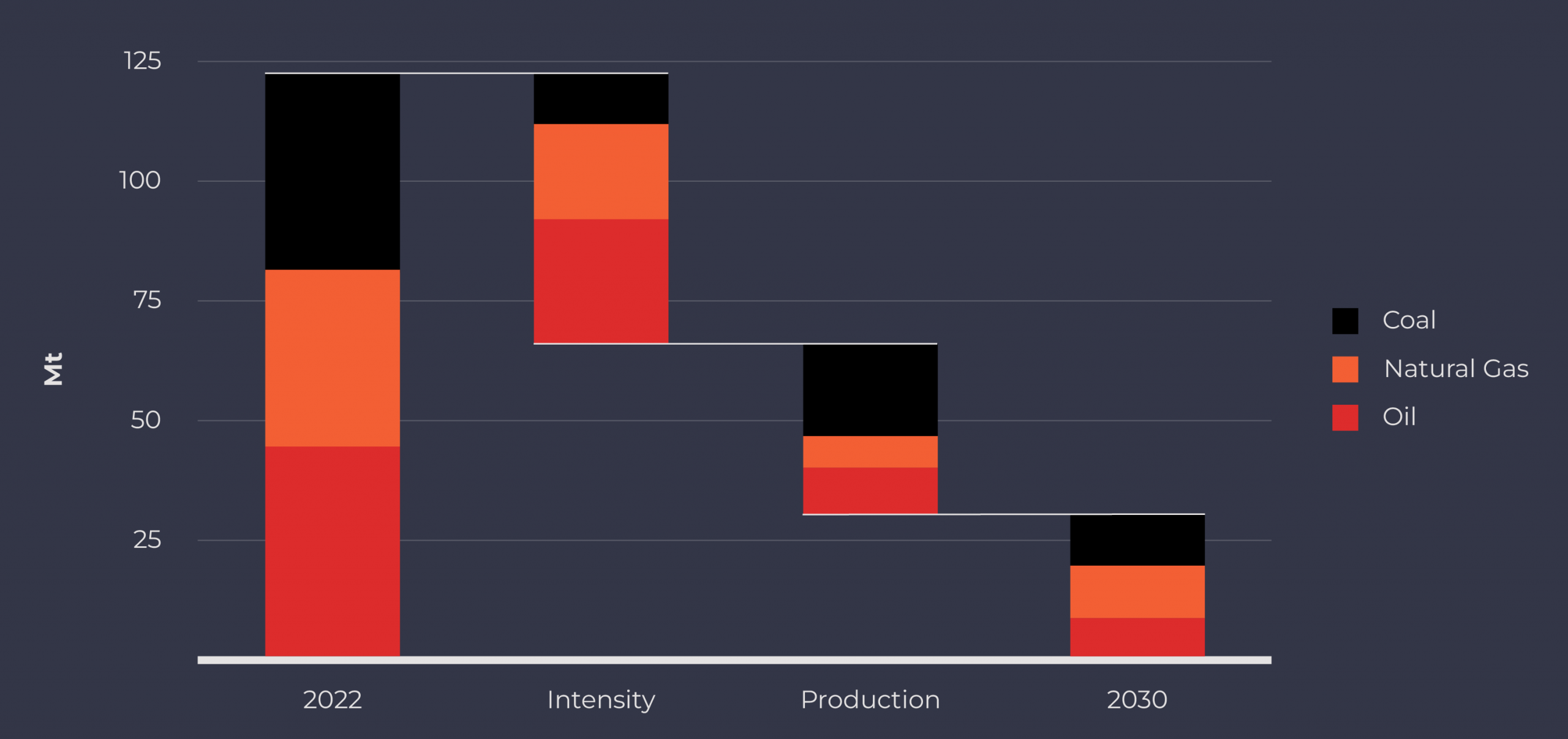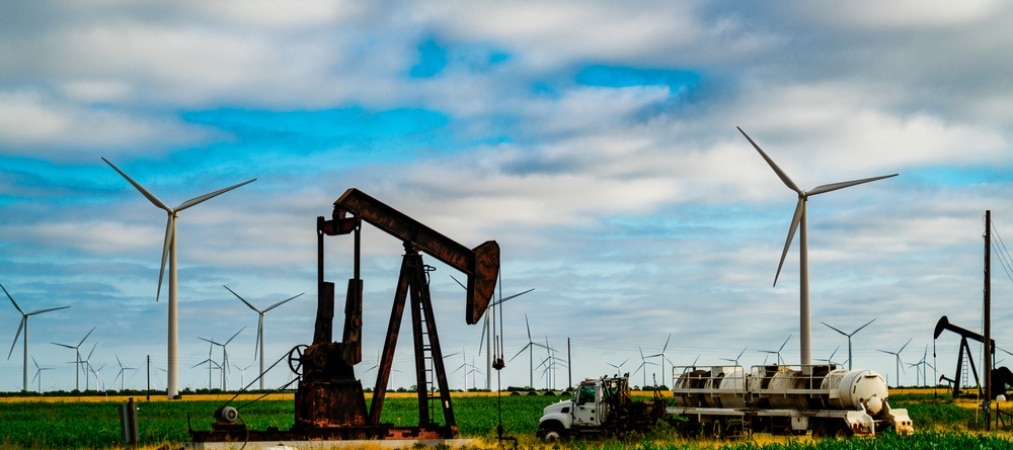Mitigating anthropogenic methane emissions is key to limiting global warming in decades up to 2050. According to the United Nation Environment Program (UNEP), affordable solutions have the potential to reduce these emissions by 40 to 45% by 2030 and could avoid 0.3°C of global warming by 2050, with the most significant contribution coming from fossil fuels (1). The Net Zero Emissions (NZE) scenario of the International Energy Agency (IEA) consistently shows fossil fuels methane emissions can decrease by 75% by 2030, driven by production reduction and operational methane releases mitigation (2). Financial institutions need to require companies to adopt ambitious methane emissions reduction plans including fossil fuels production reduction, and mitigation of the remaining emissions.
Fossil fuel sector must lead the methane emissions reduction effort
Anthropogenic methane emissions should be reduced by 40% by 2030 on average.
Methane, the second largest contributor to climate change after CO2, is emitted from numerous natural and anthropogenic sources. According to the International Panel on Climate Change (IPCC) scenarios that achieve least-cost pathways limiting global warming to 1.5°C this century, with no or low overshoot and limited reliance on Carbon Dioxide Removal (CDR) technologies, anthropogenic methane emissions should be reduced by 40% by 2030 on average. A reduction of this magnitude would avoid nearly 0.3°C of warming by 2050 and complement long-term climate change mitigation efforts. This is not only possible, but is also easily affordable. According to the UNEP, cost-effective measures could cut annual methane emissions by 40 to 45% (180 Mt) by 2030 across various sectors, the most significant contribution coming from the energy sector, and specifically from fossil fuels. (1)
The energy sector accounted for 133 Mt of methane emissions in 2022, or 37% of global anthropogenic emissions according to the IEA. (3) More than 90% of these emissions come from the fossil fuels sector, i.e. from the coal, oil and gas sectors.
Methane emissions across the energy sector in 2022. (4)

Methane emissions in the fossil fuel sector come from three main sources:
- Fugitive emissions, which occur from unintended leakage, for example from faulty seals and valves in fossil gas extraction and transport infrastructure.
- Vented emissions, which are the result of intentional release, often for safety reasons.
- Flaring emissions occur when fossil gas, released for example during oil drilling, is not recovered and is burnt instead of being vented to the atmosphere. Incomplete combustion leads to methane emissions.
Both fossil fuel production reduction and emissions mitigation are needed
Echoing the UNEP, the IEA states that the fossil fuel sector represents “a huge opportunity to cut methane emissions” and estimates the sector could cut its emissions by 70% using existing technology to limit operational releases, and by more than 75% specifically for the oil and gas sector where well-known measures are already available. (5) Implementing all measures linked to the fossil fuels industry could reduce annual methane emissions by 82 Mt, or 45% of what is required across all anthropogenic sources by 2030. Nearly half of this possible methane emissions reduction can be implemented at no net cost.
In the IEA’s NZE, methane emissions from fossil fuels operations fall by more than 75% by 2030.
Methane emissions from fossil fuels operations and reductions in the NZE Scenario, 2022-2030. (6)

A third of the planned 75% decrease of fossil fuels methane emissions between 2020 and 2030 comes from production reduction, driven by declining production in existing fields and mines, and avoiding developing any new fields and mines. The rest of the methane emissions reduction comes from the rapid deployment of emissions reduction measures and technologies, including the halt of all non-emergency flaring and venting, and the universal adoption of monthly or continuous leak detection and repair programs.
The IEA and the UNEP emphasize the feasibility of achieving substantial reductions in methane emissions from fossil fuels. These reductions play a pivotal role in the worldwide endeavor to decrease emissions by 2030. Financial institutions need to require fossil fuel companies to adopt ambitious methane reduction targets supported by detailed plans, including fossil fuels production reduction, commitment not to develop any new fossil fuels extraction projects, and mitigation of existing fossil fuels assets’ remaining methane emissions. Financial support to these companies should be contingent upon the successful implementation of these plans.



